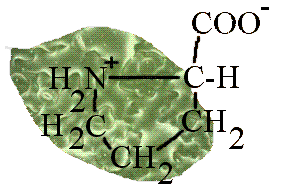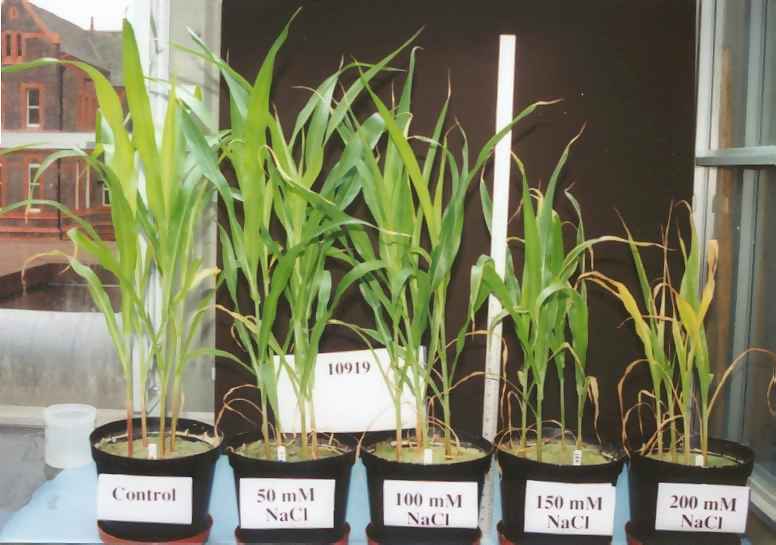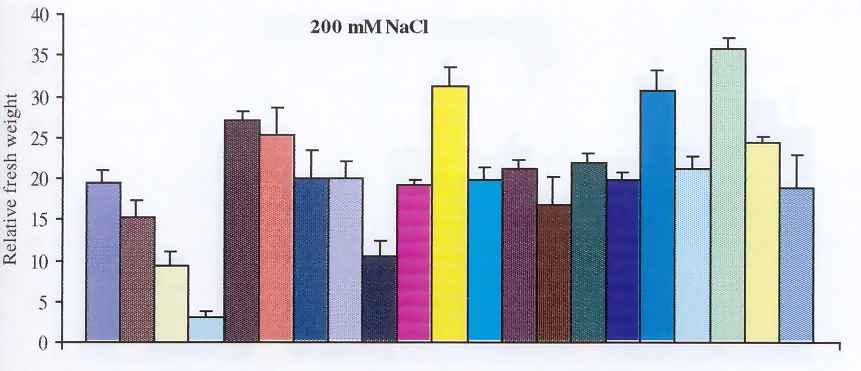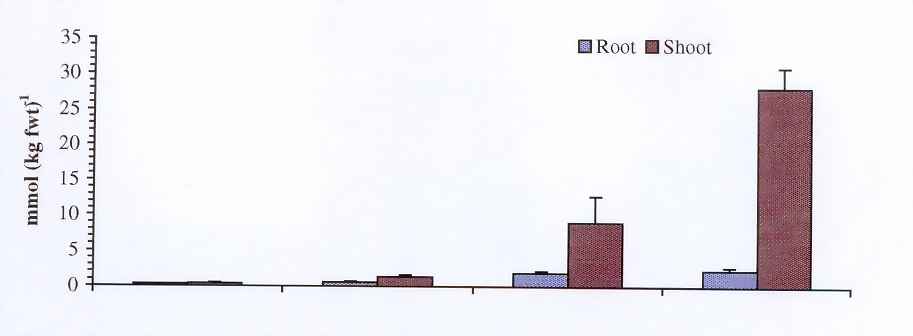 |
EFFECTS OF ABIOTIC STRESS ON
PLANTS
Salt stress |
|
| Introduction
Salt stress
Heavy metal stress
|

A variety of sorghum, sensitive to salinity, growing in sand culture and watered with a nutrient solution containing increasing concentrations of sodium chloride. All the plants have grown for the same length of time. When soils in arid regions of the world are irrigated, solutes from the irrigation water can accumulate and eventually reach levels that have an adverse affect on plant growth. Current estimates indicate that 10 - 35% of the world's agricultural land is now affected, with very significant areas becoming unusable each year. It is a world-wide problem, but most acute in North and Central Asia, South America and Australasia. Although careful water management practices can avoid, or even reclaim damaged land, crop varieties that can maintain yields in saline soils also have an important role. In contrast to crop plants, there are wild plants that thrive in the saline environments along the sea shore, in estuaries and saline deserts. These plants, called halophytes, have distinct physiological and anatomical adaptations to counter the dual hazards of water deficit and ion toxicity. Salinity can affect any process in the plant's life cycle, so that tolerance will involve a complex interplay of characters. Research projects at Liverpool have investigated details of the physiology and biochemistry of salt tolerance and also looked at methods to screen overall plant performance that could be used in breeding programmes. One recent project investigated two species of sorghum (Sorghum
bicolor and S. sudanense) represented by 21 accessions. Although
increasing sodium chloride concentrations significantly reduced all aspects
of growth, there was considerable variation between the accessions. Root
and shoot length measurements of the accessions, and the progeny of a cross
between four of them, indicated that a great proportion of the differences
was genetically determined.
Measurements of internal solutes indicated that there was a physiological basis to these differences. The more tolerant accessions tended to select against uptake of sodium ions, and to synthesise increased amounts of organic solutes (such as proline) for osmotic adjustment. Synthesis of organic solutes appears to be a common strategy for osmotic adjustment by plants despite the fact that it channels photosynthetic resources away from other aspects of growth
The results of this project indicate that there is scope within the sorghum gene-pool to increase the salt tolerance of commercial varieties, as well as indicating the physiological traits that are advantageous. |

